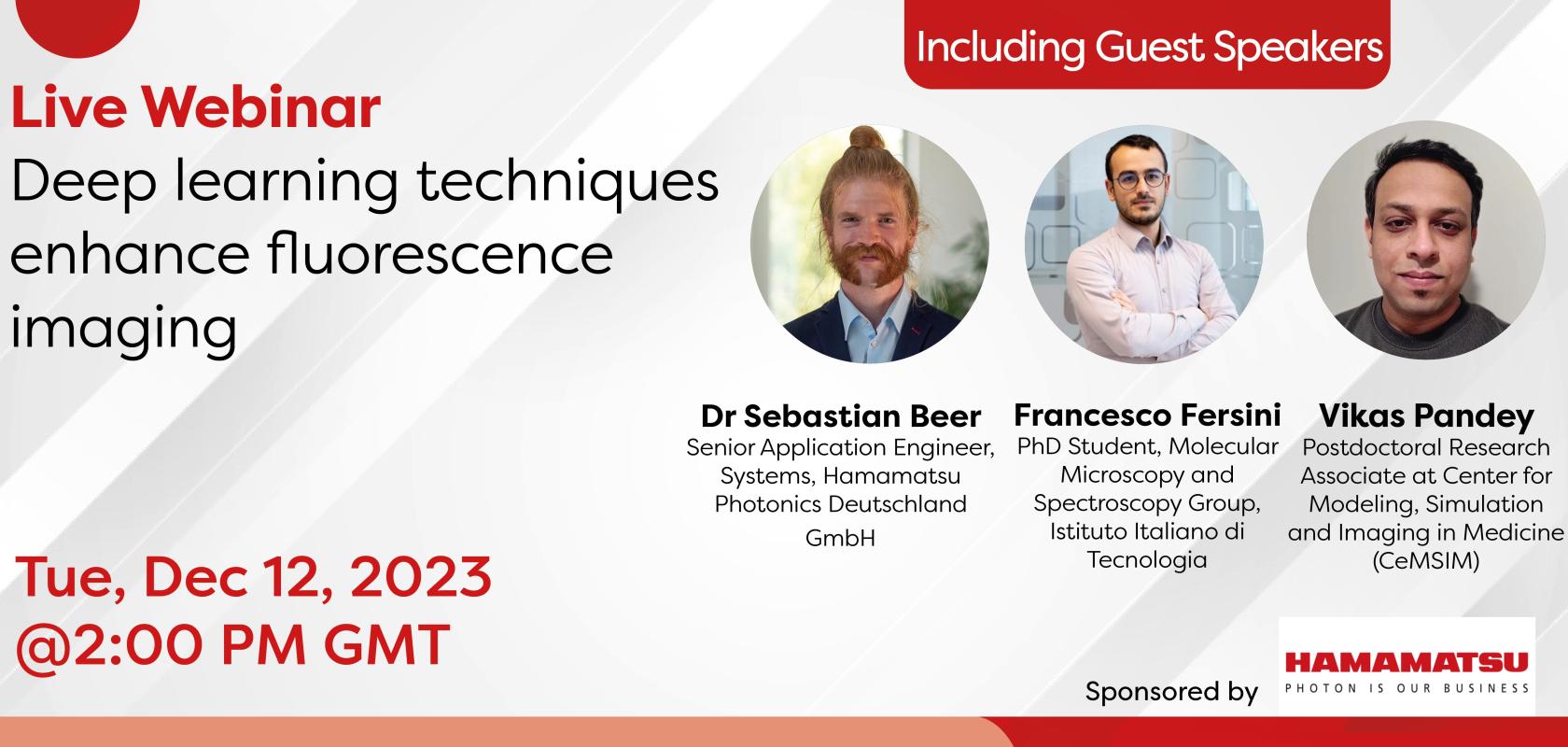On demand: Deep learning techniques enhance fluorescence imaging

Webcast supported by
Fluorescence imaging offers a detailed, non-invasive approach to visualising biological processes. Its applications range from DNA Sequencing and understanding cellular functionality, to guiding complex surgeries in the operating room.
Alongside the ongoing exploration and advancement of deep learning, biomedical researchers are now using this exciting tool to develop cutting-edge fluorescence imaging methods. For example, deep learning can enable more precise depth maps and 3D information to be captured, enhanced image reconstruction, robust fluorescence lifetime estimation with limited photons, and much, much more.
In this webinar, our speakers will share the latest ways in which they are using deep learning to design state-of-the-art fluorescence imaging technologies, looking at:
- Where deep learning can add value in fluorescence imaging
- The current state of adoption of deep learning in fluorescence imaging
- The challenges associated with integrating deep learning in fluorescence imaging
- Whether deep learning can ultimately expect widespread adoption in fluorescence imaging
In addition, this webinar will provide a general overview of the different detector technologies available for fluorescence imaging, based on different imaging modalities.
Who should attend?
- Biomedical researchers using: fluorescence microscopy; NIR time-resolved imaging technologies; laser scanning microscopes
- Machine learning specialists involved in biotechnology, image processing and analysis
- Optical system engineers, physicists, and microscopists
- Optical engineers building microscopes
- Researchers involved in cancer imaging
Speakers
Vikas Pandey
Postdoctoral Research Associate at Center for Modeling, Simulation and Imaging in Medicine (CeMSIM)
Deep learning in fluorescence lifetime and diffuse optical imaging
Fluorescence Lifetime imaging (FLI) is an important method to understand the cellular functionality in biological samples. In the case of cancer diagnosis, FLI has emerged as an efficient method for in-vivo target-drug binding studies. However, FLI data analysis is complex and requires high computation methods which can sometimes take hours to process the information collected. Deep learning models in these situations can play a key role for fast and efficient extraction of significant biological parameters with high accuracy.
This presentation will share the development of deep-learning approaches in FLI and diffuse optical imaging to design state-of-the-art imaging technologies.
--
Francesco Fersini
PhD Student, Molecular Microscopy and Spectroscopy Group, Istituto Italiano di Tecnologia
Achieving simple and fast aberration correction in fluorescence microscopy using deep learning
Fersini and his colleagues are designing a new super-resolution microscopy technique to improve deep imaging resolution and contrast using adaptive optics and deep learning to correct optical aberrations. In recent years, various adaptive optics techniques have emerged to address optical aberrations, typically relying on intricate systems or iterative algorithms.
This presentation will present a novel approach through the single acquisition of a probed sample using a detector array. The resulting multi-dimensional dataset from the detector array offers a gentle solution for the sample, applicable to any laser scanning microscope equipped with such a detector array. Fersini will show how the raw dataset can be pre-processed using a pre-trained convolutional neural network, enabling real-time and highly accurate estimation of the first 11 Zernike coefficients for aberration correction.
--
Dr Sebastian Beer
Senior Application Engineer, Systems, Hamamatsu Photonics Deutschland GmbH
Detectors for fluorescence microscopy
Fluorescence microscopy is a fundamental technique used in the field of life sciences. Recording, processing, and analysing the generated images are crucial steps in the imaging pipeline. The detector, which acts as a bridge between the optical and digital worlds, is a key component in any research grade microscope. Over the last three decades, several microscopy techniques such as confocal, multiphoton, super-resolution, and lightsheet have been developed and improved. Each of these techniques requires different detectors to be implemented.
This presentation aims to provide a general overview of various detector technologies based on different imaging modalities.
--
Moderated by a member of the Electro Optics editorial team

